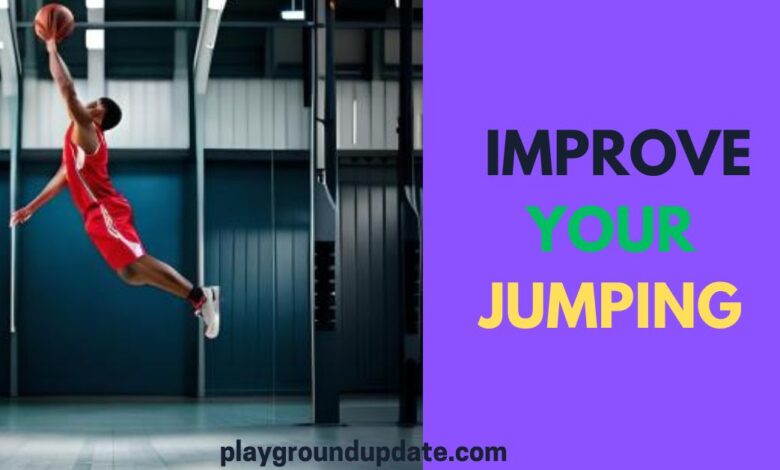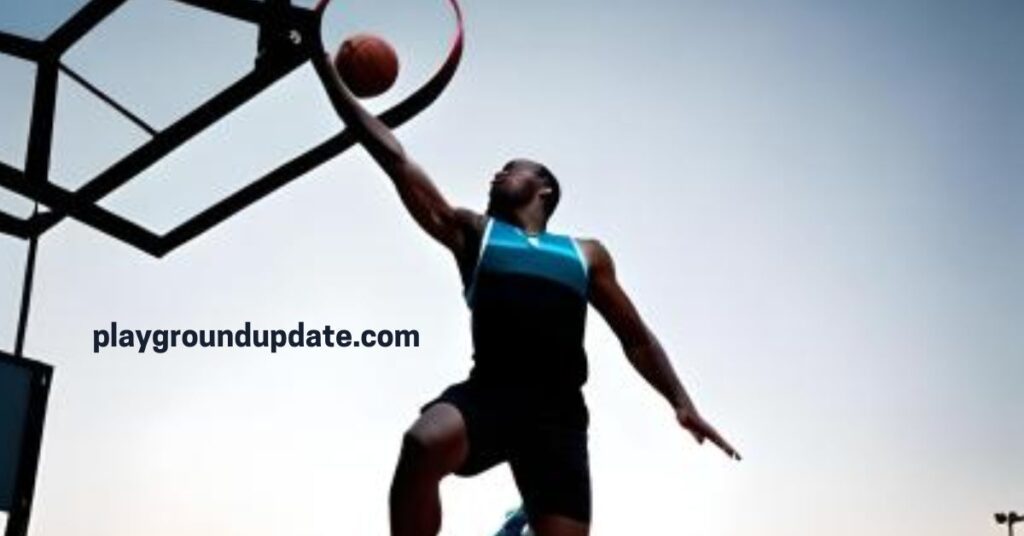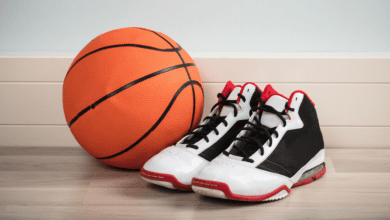Improving Jumping in Basketball: Pro Secrets Revealed!

Improving Jumping in Basketball- Basketball is a game that requires a combination of skills to succeed. One of the most crucial skills for any player, regardless of position, is the ability to jump effectively. A strong vertical leap can give a player an edge over opponents, allowing them to grab rebounds, block shots, and execute powerful dunks. In this blog post, we will explore various strategies and exercises to help you improve your jumping ability and take your basketball game to new heights.
Improving Jumping in Basketball is Important
Jumping is an integral part of basketball, as it is required for various aspects of the game. From shooting to rebounding and defending, an impressive vertical leap can significantly impact a player’s performance. Here are some key reasons why jumping is essential in basketball:
- Rebounding: Having a strong jump allows you to grab rebounds over taller opponents. It gives you an advantage in securing both offensive and defensive rebounds, increasing your team’s chances of getting possession and scoring opportunities.
- Shooting: A higher jump allows you to release the ball at a higher point, making it harder for defenders to contest your shot. It can also help you shoot over taller opponents and increase your shooting percentage.
- Blocking: To block shots effectively, you need to be able to jump and reach the ball at its highest point. A better vertical leap enables you to challenge shots, alter opponent’s shooting trajectories, and provide better rim protection for your team.
- Dunking: Dunking the basketball is not only an exciting way to score, but it also intimidates opponents and energizes teammates and fans. Improving your jumping ability can help you execute powerful dunks and add flair to your game.

Now that we understand the importance of improving jumping in basketball let’s delve into the strategies and exercises to enhance your vertical leap.
1. Plyometric Training
Plyometric exercises are excellent for increasing your power and explosiveness, essential for jumping higher. These exercises involve quick, explosive movements that activate your fast-twitch muscle fibers. Here are some plyometric exercises you can incorporate into your training routine:
a. Box Jumps
Box jumps are a classic plyometric exercise that targets your lower body and develops explosive power. To perform a box jump:
- Start with a sturdy box or platform of an appropriate height in front of you.
- Stand with your feet shoulder-width apart, ready to jump.
- Bend your knees and swing your arms backward.
- Explosively jump off the ground, swinging your arms forward and propelling yourself onto the box or platform.
- Land softly on the box, absorbing the impact with your legs.
- Step down carefully and repeat the exercise for the desired number of repetitions.
By progressively increasing the height of the box over time, your jumping ability will improve as your legs get stronger and more explosive.
b. Depth Jumps
Depth jumps are another effective plyometric exercise that helps improve your reaction time, explosiveness, and overall jumping ability. Follow these steps to perform a depth jump:
- Find a sturdy elevated platform, such as a sturdy wooden box or bench, at a manageable height.
- Stand on the edge of the platform with your toes slightly hanging off.
- Step off the platform and immediately upon landing, quickly jump upward as high as possible.
- Upon landing from the second jump, absorb the impact with your legs and repeat the exercise.
- Start with a lower platform and gradually increase the height as you become more comfortable with the exercise.
Depth jumps help train your body to generate maximal force in minimal time, translating into increased vertical jumping ability.
2. Strength Training
Building strength in your lower body is essential for improving your jumping ability. Stronger muscles generate more power and allow you to jump higher. Incorporate the following strength training exercises into your routine:
a. Squats
Squats are a compound exercise that targets multiple lower body muscles, including the quads, hamstrings, and glutes. To perform a squat:
- Stand with your feet shoulder-width apart.
- Bend your knees and lower your body as if you are sitting back into a chair.
- Keep your chest up, back straight, and weight on your heels.
- Go as low as you can while maintaining proper form, ideally until your thighs are parallel to the ground.
- Push through your heels and extend your legs to return to the starting position.
- Repeat for the desired number of repetitions.
By gradually increasing the weight or resistance used during squats, you can build lower body strength and enhance your jumping power.
b. Lunges
Lunges target the same lower body muscles as squats but also engage your core for stability. To perform a lunge:
- Stand upright with your feet hip-width apart.
- Take a step forward with one foot, ensuring your knee does not go past your toes.
- Lower your body, bending both knees until your front thigh is parallel to the ground.
- Push through your front heel and return to the starting position.
- Repeat on the other leg and alternate legs for the desired number of repetitions.
Lunges can be performed with or without weights. As you become stronger, consider adding dumbbells or a weighted vest to increase the intensity of the exercise.
3. Stretching and Flexibility
Flexibility plays a crucial role in jumping higher. By improving your flexibility, you can achieve a greater range of motion, allowing for more explosive jumps. Incorporate the following stretching exercises into your routine:
a. Dynamic Stretching
Dynamic stretching involves active movements that mimic the actions performed during jumping. Some dynamic stretching exercises for improving your jumping ability include:
- Leg swings: Stand next to a wall or sturdy object and swing one leg forward and backward in a controlled manner.
- Walking lunges: Perform walking lunges while maintaining a smooth, flowing motion.
- High knees: March on the spot while lifting each knee as high as possible, focusing on explosiveness.
Dynamic stretching helps warm up your muscles, improve circulation, and increase flexibility while preparing your body for explosive movements.
b. Static Stretching
Static stretching is best performed after your workouts or training sessions. It involves holding stretches for a longer duration to improve flexibility. Key static stretches for enhancing your jumping ability include:
- Standing calf stretch: Stand near a wall, place one foot behind you with your heel on the ground, and lean forward, feeling a stretch in your calf.
- Seated hamstring stretch: Sit on the ground with one leg extended and the other leg bent. Reach forward towards your toes, feeling a stretch in the back of your thigh.
- Butterfly stretch: Sit on the ground with the soles of your feet touching. Grasp your feet and gently press your knees toward the ground, feeling a stretch in your groin and hips.
Incorporating these stretching exercises into your routine improves your muscle flexibility, allowing you to generate more power during jumps and reducing the risk of injury.
4. Proper Jumping Technique
In addition to building strength and power, mastering the proper jumping technique is crucial for maximizing your jumping potential. Here are some key tips to improving your jumping in basketball:
- Use your arms: When attempting a jump, vigorously swing your arms upward to generate upward momentum. The motion of your arms helps generate power and aids in propelling your body higher.
- Bend your knees: Before jumping, bend your knees to build tension in your leg muscles. This stored energy will be released explosively when you jump, allowing you to generate more power.
- Explode off your toes: Jumping off the balls of your feet rather than flat-footed enables you to utilize the full power of your leg muscles. Push through your toes and extend your ankles to achieve maximum height.
- Land softly: Upon landing, absorb the impact by slightly bending your knees to reduce stress on your joints. Landing softly decreases the risk of injuries and allows for a quicker recovery to prepare for the next jump.
By honing your technique and consistently practicing proper mechanics, you can optimize your jumping ability and increase your vertical leap.
Conclusion
Improving jumping in basketball not only enhances your overall performance but also adds excitement and versatility to your game. Incorporating plyometric training, strength exercises, flexibility work, and maintaining proper technique are all essential components to take your vertical leap to new heights. Consistency and dedication are key, as progress may not be immediate. However, with consistent effort and a well-rounded training routine, you can soar above the rim and make a significant impact on the court. So, lace up your sneakers, hit the gym, and start working on those jumps. The sky’s the limit!
Also Read
10 Basketball Shooting Drills: Take Your Shot and Become a Legend on the Court!
How to Win at Basketball Betting
How to Choose the Best Basketball Shoes for Performance and Comfort





